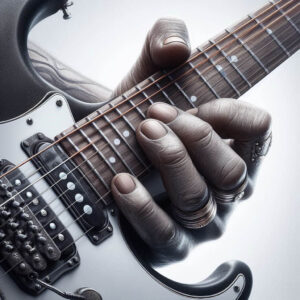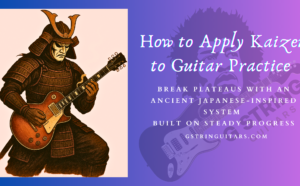“Hand Tone” is the Unique Character your Hands Impart to the Strings, Adding Expressiveness to your Music.
It’s the Subtle Nuances in your Touch, Bends, and Picking Rhythm that Transform a Melody into a Powerful Expression.
Discover how Hand Tone Shapes your Sound and Elevate your Guitar Playing to New Heights.
This Post May Contain Affiliate Links
In compliance with the FTC guidelines, please assume that some of the links on these posts and sites are affiliate links (Amazon or others) from which I may earn a small compensation/commission from sales of certain items at no extra cost to you from qualifying purchases.
Anytime you see a link that looks like “astore.com, paid link, #ad, #CommissionsEarned or Amazon/Amazon.com/ca,”… it can be assumed that it is an affiliate link.
To learn more, follow the link below.
The Electric Guitar And Hand Tone
Unveiling The Soul Of Sound
In the world of Electric guitars, conversations about gear and tone often take center stage, usually referred to as “Tone chasing.”

A Tone Chaser is a guitarist who is endlessly fascinated by the nuances of the electric guitar sound.
They constantly seek new gear, experiment with different setups, and fine-tune their equipment to achieve the ideal tone for any musical situation.
Discussions often revolve around amplifiers, pedals, pickups and different types of guitars.
The Anatomy Of Tone
Tone encompasses many sonic characteristics: brightness, warmth, clarity, and sustain.
A Tone Chaser understands that every element of their rig contributes to the overall sound.
The Pursuit Of Perfection
For a Tone Chaser, the perfect tone is both a creative endeavour and a technical challenge.
Many players obsess over gear, endlessly chasing the latest and greatest to achieve the perfect electric guitar tone.
They spend hours researching, watching demo videos, and visiting music stores, searching for the elusive combination of equipment that will unlock their desired sound.
The quest for the perfect tone seems endless.
However, amidst this gear frenzy, a profound or fundamental truth is often overlooked: the most crucial element in shaping tone is not found in equipment, catalogues or gear forums but within the symbiotic relationship and harmonic dialogue in the nuance art between the guitarist’s ears and fingertips.
Crafting one’s sonic identity solely through the hands transcends the boundaries of gear-centric obsession and unveils the mystique.
“There is no magic guitar, no magic amp, just magic people.”
Steve Lukather
Hand-To-Instrument Connection
What Is Hand Tone?
Hand tone refers to the subtle nuances in the sound produced by the guitarist’s fingers and hands as they interact with the instrument.
How you approach the notes, through a bend, touch, pressure, or attack, will contribute to a guitarist’s tone’s unique character, along with…
- What kind of plectrums are used
- Are you using your fingers to pick like Jeff Beck?
- Is your left hand playing rigid or relaxed?
- How defined is your ear?
Other nuanced finger control techniques, such as sweep picking, volume swells, tremolo bar work, palm muting, hammer-ons or pinch harmonics, allow players to harness the hand-to-instrument connection and imbue their playing with emotion, dynamics, and musicality.
On a design front, electric guitars have evolved to enhance the player’s sensitivity and responsiveness.
Unlike acoustic guitars, where the sound is primarily produced by the player’s hands in concert with the resonance of the body size, wood material and strings, the electric guitar’s tone is heavily influenced by the player’s touch, technique, and control of the overall instrument.
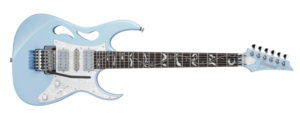
The Ibanez Steve Vai Signature PIA 6-String Electric Guitar in Blue Powder -Image courtesy of Amazon.com – Tap to see more.
Innovations such as compound radius fingerboards, fast profile necks, different bridge hardware, and advanced pickup technology have refined the instrument’s playability, enabling guitarists to explore new realms of expressiveness with greater ease.
As technology advances, the future holds boundless possibilities for further refining electric guitar designs, with input from veteran virtuosos and creations of their signature instruments leading the charge.
Touch Sensitive
Modern electric guitars are so touch-sensitive that your playing and expression can become as unique as your fingerprint. Just as no two prints are alike, no two guitarists will possess identical hand tones.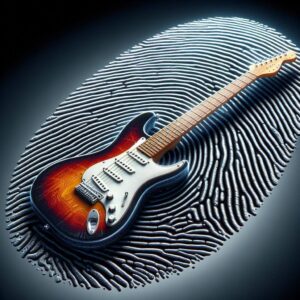
Commonly referred to as “touch” or “feel,” tone encompasses many factors contributing to each guitarist’s unique sonic fingerprint.
Whether it’s the gritty blues of Stevie Ray Vaughan or the neoclassical depth of Yngwie Malmsteen, embracing one’s unique hand tone fosters authenticity and originality in musical expression.
Every subtlety in finger movement contributes to the tonal palette, from the angle of attack of your picking hand to the pressure exerted on the strings on your fretting.
This is all part of creating an individual identity on the instrument and is not easily replicated by other players.
Testing This Concept
Have you noticed that even if you learn your favourite solo by another artist and play it note for note, it will still sound different when the original artist plays it?
The nuances of the hand tone and ear are individual to every player.
Each player’s ear, feeling, and approach to what they are hearing are different; like an internal language, it can translate the subtlest variations in finger pressure and articulation into expressive musical gestures individual to the artist.
Technique And Hand tone
The technique is the foundation and tool upon which the guitar and hand tone are built.
Whether it’s the fluidity of legato runs or the precision of alternate picking, how a guitarist executes techniques directly impacts the tonal character of their playing and imprints their sonic identity onto every note.

Also, as your relationship/technique with the instrument improves and changes, so will your tone.
How Much Technique is Needed?
It is important to note that while some people need a lot of technique to get their point across, some people do not.
It’s not a contest or a competition and nobody is keeping score.
It’s about the music inside you, your unique voice, and the mechanics of expressing your musical language and getting it out.
- I.e., A classical guitarist will demand more out of his technique than a blues guitarist would.
3 Levels To Technique & Beyond
- Firstly, External hard work, or Woodshedding – This is your physical time spent on the instrument, experiencing Tone/Touch/Intonation, etc., along with your language/connection and your abilities to execute. This takes a certain amount of practice, study, focus, techniques, and music theory. How far you go will depend on your goals.
- Second and more important is going “Deeper,” – This is where the technique is available but no longer a thought process. A point where you go from feeling like you have to work at it, to mastering all the techniques for your goals, and playing is virtually effortless. It flows easily, and there is no thinking, just confidence and command. You rely on your ability to listen and trust your ear.
- Finally, the State of Flow or Power of Presence – This is when you connect with the musical voice inside you. The deeper dimension of playing is using your command of the instrument and ear to express artistry and creativity and have this seamlessly and effortlessly flow out of you in any musical environment. (More on this later)
The Art of Listening
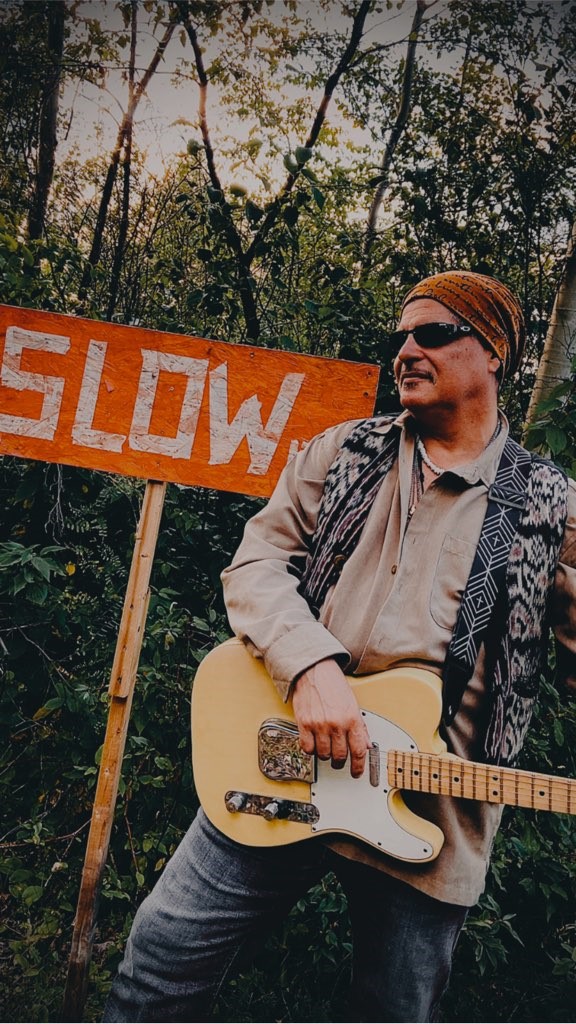
Starting A Journey At 7 Years Of Age, The Love For The Guitar Only Became Stronger Going Into My Teens. This Leading To An Exciting Time Of Teaching, Performing, And Recording. Join Me Now As We Can Bring The Love Of This Instrument To Other Musicians Globally.


